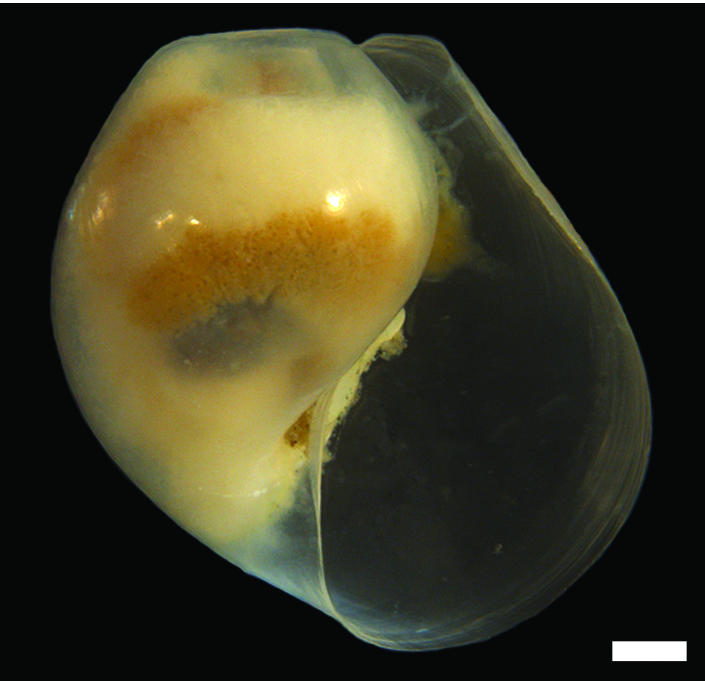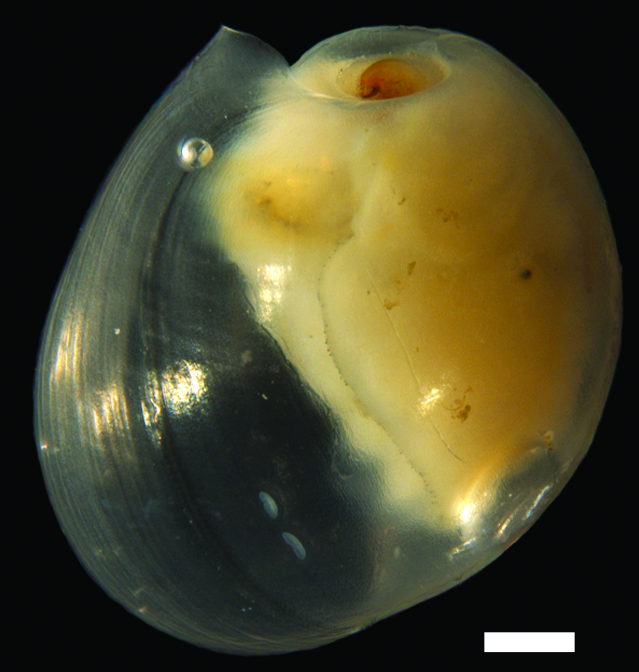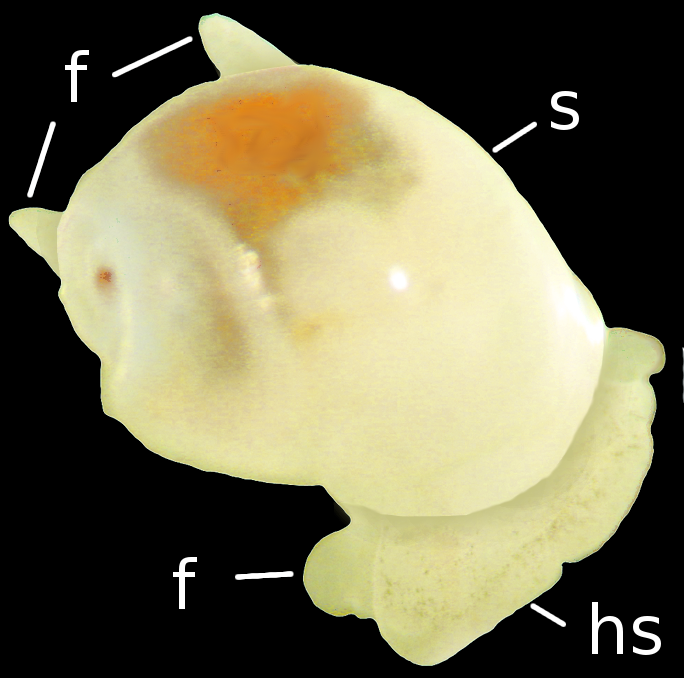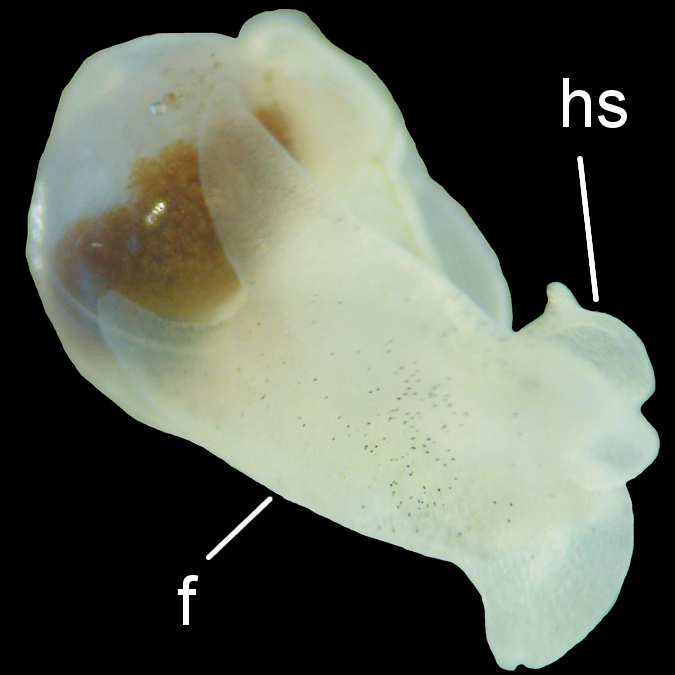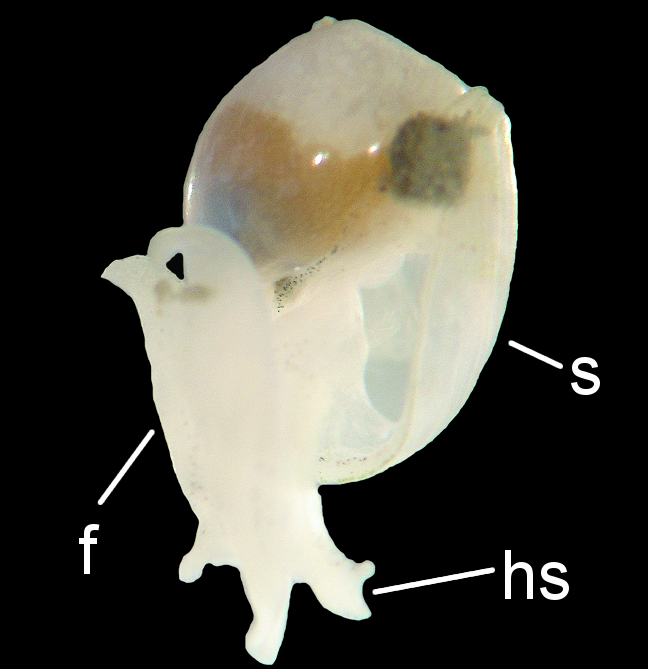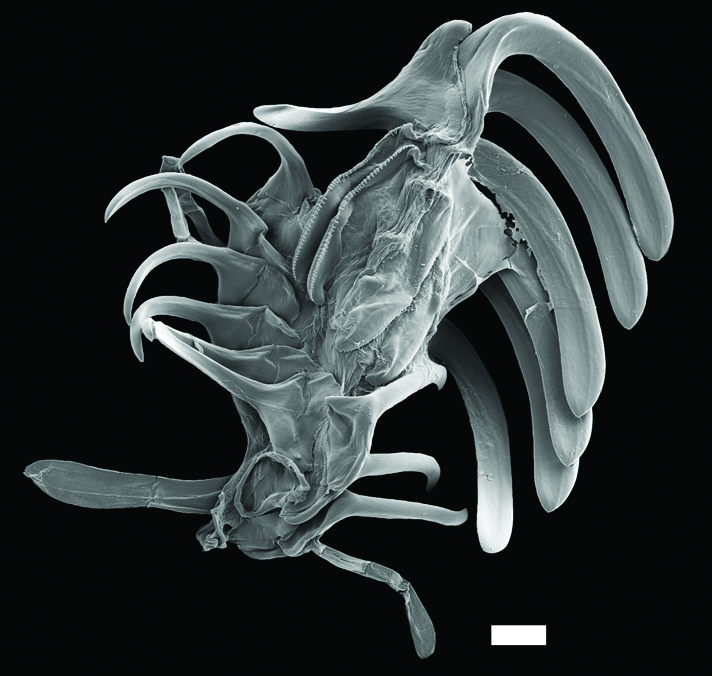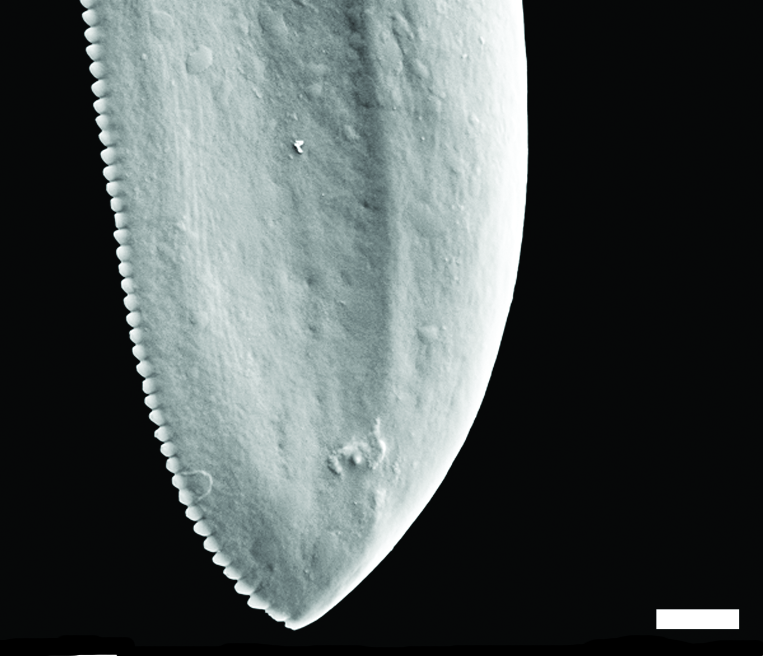Diaphana globosa
Shell description
The thin shell is external and transparent, usually with a globe-like shape. The opening is large. The top of the shell (apex) is blunted; the oldest part of the shell (protoconch) is brownish transparent and sticks out (mamilate) but not beyond the first whorl. At the bottom of the shell an umbilicus is present. The surface is smooth and the length of the shell varies between 2.5–3.9 mm.
Animal description
The body is whitish transparent in colour, with black dots on the foot and head shield. The head shield is broad and short with tentacles in the hind part. The tips of the tentacles point upwards in live animals. The foot is forked in the hind part and forms two lobes in the front.
Anatomy
The radula consists of 11–12 rows of teeth, with one inner lateral on each side and one central (rachidian) tooth. The outer lateral teeth are absent. The lateral teeth are long with denticles on the inner edge. The central tooth have two lobes separated by a gap and bears denticles. The radula is asymmetric as the right lateral teeth and the right lobe of the central tooth are larger compared to the left side of the radula. The left lateral teeth have a large denticle on the tip. The male reproductive system consists of a short penis chamber that connects to a prostate with two large lobes; these lobes are usually intertwined giving the impression of a single lump.
Ecology
Occurs at depths between 25–2644 m on mud, stones, sand, fine sand and silt, pebbles, silty sand, shell gravel, gravel, clay and foraminifers.
Geographical distribution
Occurs along the entire Norwegian coastline, the Faroe Islands and along the European coast until northern Portugal.
References
Ohnheiser LT og Malaquias MAE (2014). The family Diaphanidae (Gastropoda: Heterobranchia: cephalaspidea) in Europe, with A redescription of the enigmatic species colobocephalus costellatus M. Sars, 1870. Zootaxa 6(3774): 501-522. http://zoobank.org/References/1C4C791C-09D7-4711-9D05-1ABE3DB24916 DOI: 10.11646/zootaxa.3774.6.1.

